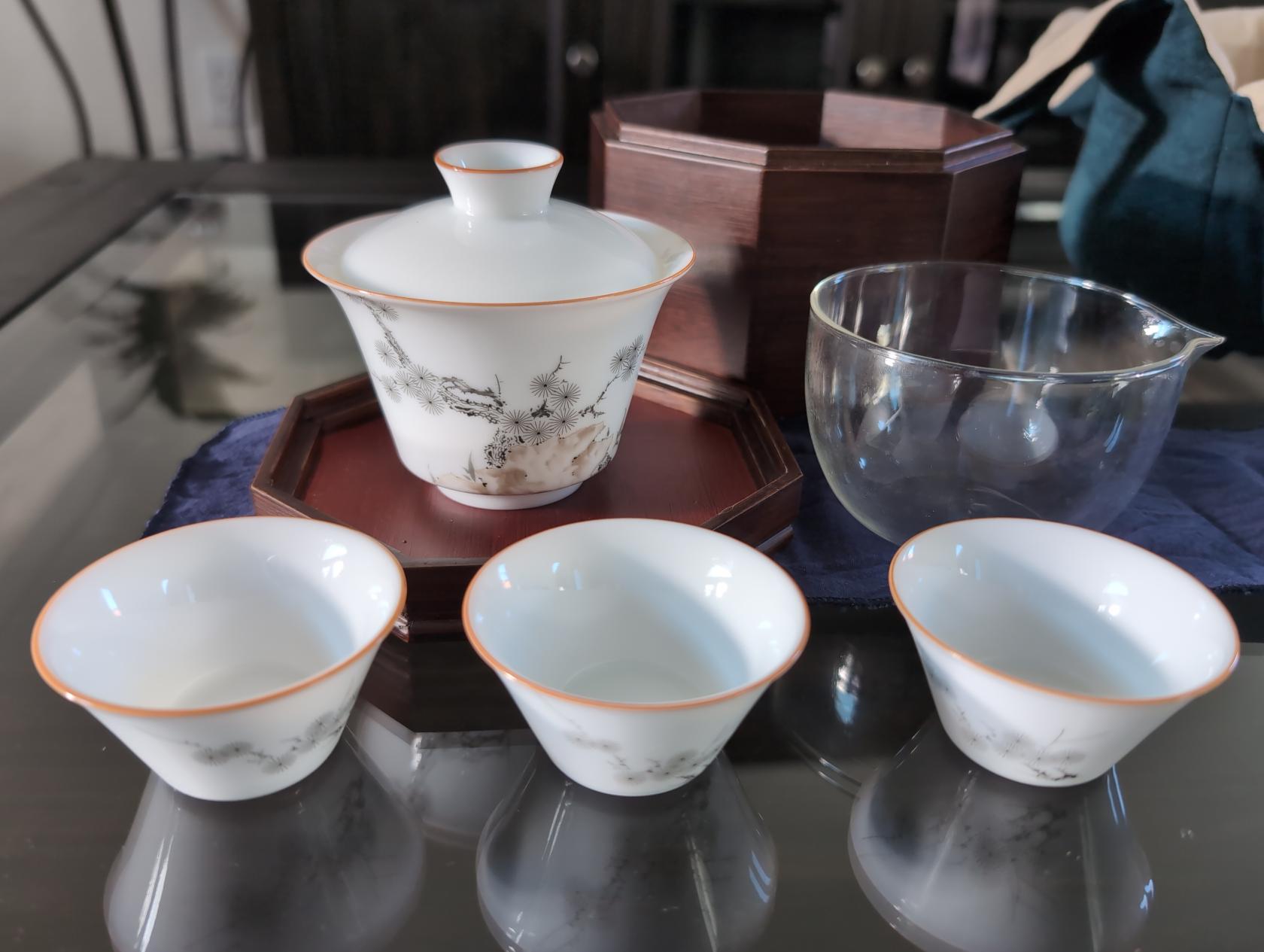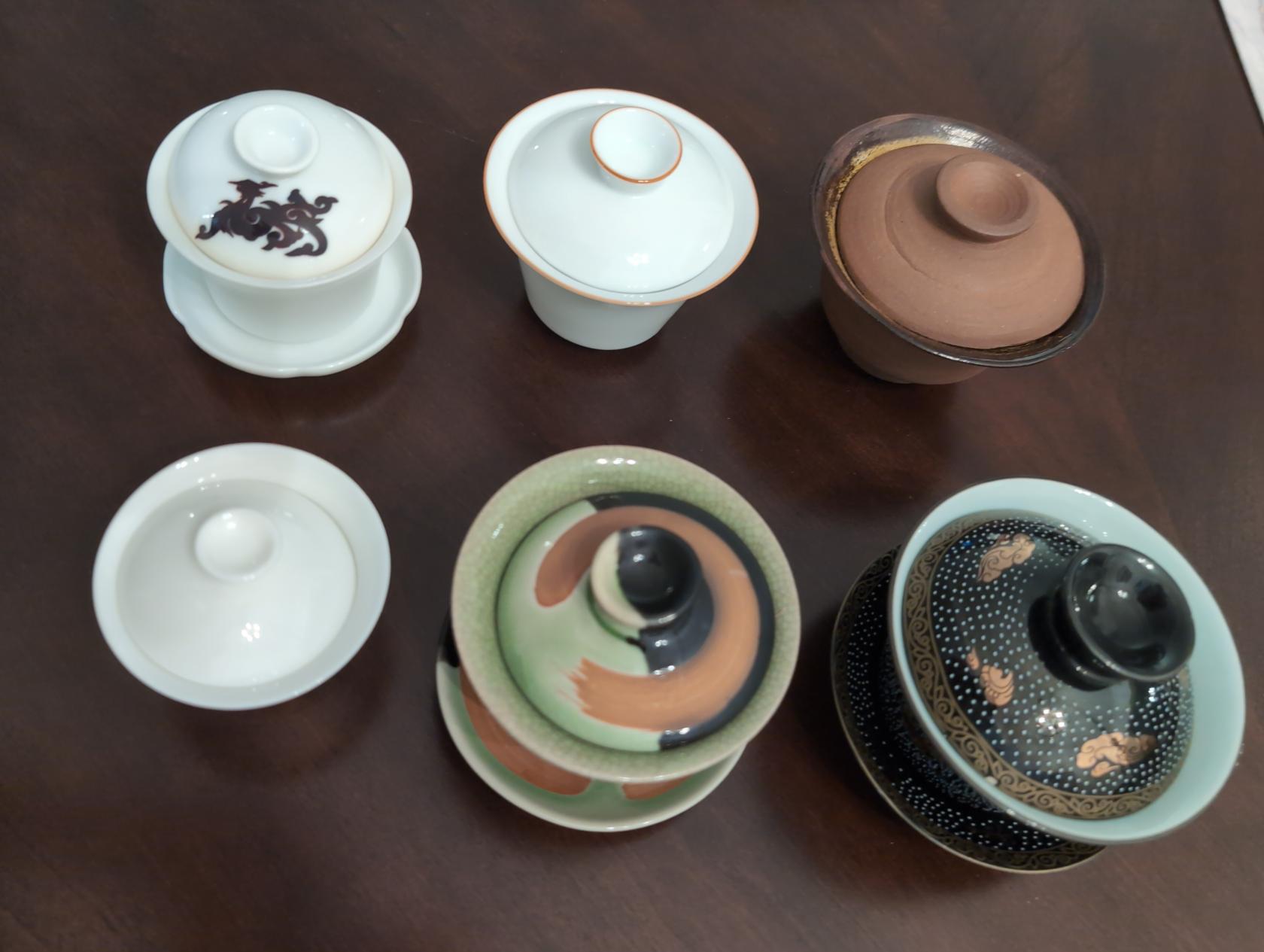Gongfu Cha (Tea) Basics
Please keep in mind that Gongfu is a very wide-spread practice andwith willno berigid adaptedformula or recipe in a cook book. Rather, Gongfu is an ever-flowing river, constantly adapting to the unique styles, producing unique tastes for those who practice it.
As I sit here, sipping my tea and watching the sun set over the nation of theRed, personWhite, makingAnd the tea. Alternatively said, thereBlue
There are many techniques and many methods for preparing tea. Some people may believe there is an even more basic/traditional/easier/etc way to do gongfu, and the Tea Tavern has no way to prove them nor us wrong or right. As a result, the following is writing based on what the Tea Tavern currently believes. If you have an interest in going down that research rabbit hole, email quests (a) tea-tavern.com, where our quest givers may be able to provide extra resources in hopes of you sharing the information that you learn with us, after finding it. (^-^)
Basic Tea Tavern Gongfu Cha
In the world of tea, the Tea Tavern finds no greater joy than sharing a cup with friends and family. And what better way to do so than with the ancient art of Gongfu Cha? This traditional, Chinese method of brewing tea emphasizes patience, focus, and harmony - just like the principles we have learned from our dear friends around the world.
Tooling
Gongfu Cha uses the following materials, which can be seen in the image above. The items in the image come in the Adventurer's Brewing Kit on tea-tavern.com.
General tea preparation tools, such as a kettle for hot water, are still used, but these items are different than what is often seen in other culture's brewing methods.
Gaiwan
One of the most traditional and useful methods of brewing tea is in a gaiwan (porcelain cup and lid, to the left of the glass cup). It has a rimmed bottom, an outward curved lip, and a lid with it's own rimmed handle. This is the container that tea leaves are brewed.
Gong Dao Bei (Justice cup) / Furnace / Serving cup
When one finishes brewing, the tea from the gaiwan is poured into the justice cup (Glass cup with a lip for pouring on the right). This assures "justice" in that everyone will be given the same strength brew of tea, rather than the first person served receiving the weakest brew, and the last person receiving the strongest brew.
Tea cup / Tasting cup
The tea cup (front three cups) is the cup that receives some of the brewed tea from the jusice cup and is used for drinking the tea. The size is usually smaller than the gaiwan and justice cup, as they will each be given equal amounts of tea from the Justice cup. As a result, everyone drinking tea prepared by gongfu will need a cup.
Prepare for Tea!
Materials can be prepared before beginning anything more time sensitive.
- Gongfu-specifc Supplies
- Gaiwan
- Justice Cup
- Tea cups
- Water
- Most kettles fill to around 1-2 liters or 4-8 cups, depending on what unit of measurement the kettle uses.
- Use purified (distilled, reverse osmosis, etc.) water, and add either...
- 1 or 2 milliliters of A&B Original minerals to remineralize the water, making the perfect water for tea
- Or a minor pinch of salt
- There are a lot of reasons for this, and if you'd like more information on this topic, our brewing component supplier TeaCurious has a lot of information on this topic.
- 1 or 2 milliliters of A&B Original minerals to remineralize the water, making the perfect water for tea
- Tea
- Measure out 5g (5 grams) of tea, and add it to your gaiwan
Why Measure the Quantity of Tea?
{{@108}}
Prepare the Tea
PLEASE READ THIS ALL OF THIS SECTION BEFORE STARTING. We are using boiling water, here!
We are also skipping many technique specifics, using a technique that may not be ~perfect~ for every tea, but works for most; The focus is a good, general explanation, showing the safest options for someone new. At a later time, more techniques will be written about on different pages.
That being said, the basic steps will be as follows:
- Add water to the gaiwan and put the lid on top once done. When filling, try to fill it to where the gaiwan starts to curve out, where the lid would still seal on top of the water, or below either the above points.
- Wait a few seconds, 2-10 seconds for most tea
- Understand that nobody cast the "modify memory" spell. 2-10 SECONDS for steeping, so I hope you read this all ahead of time, because you probably should be pouring by now. (To be honest for most teas, it isn't the end of the world if you go over; it just becomes strong to most people. You might like stronger teas, though. Learn and brew to your preference.)
- Lift the gaiwan with both hands.
- Put your thumbs on, not in, the lid's rim.
- Use your fingers to lift from the bottom of the gaiwan, and like the top, put your fingers on, not inside, the gaiwan's bottom rim.
- Reason: The gaiwan gets hot. These rims help prevent the user from getting burned. This is also why NOT hold the inside of the rims. They are also closer to the water, and will get hot fast by comparison to the rims.
- Over the justice cup, tilt the gaiwan's top towards yourself and the bottom away from yourself. The brewed tea will start to come out, and should stream into the justice cup.
If nothing comes out, return the gaiwan to a normal standing position and adjust the lid slightly to make sure there is not a water-tight seal between the lid and cup. Then try again.
After all this, the brewed tea should be in the cup, ready for serving.
Serve the Tea
Pour equal amounts of tea from the justice cup into the tea cups for as many people as are having tea.
When ready for more tea, repeat the "Prepare the Tea" practice, as some Tea Tavern leaves can be re-steeped over 10 times and still have a good amount of flavor. It is worth noting that the more steeps completed, the longer the steeping might have to go for to get a satisfactory flavor. And over all those brewing, people can talk, share stories, laugh, and live merry over a fresh brew (of tea). ;D
But maybe you aren't using Tea Tavern leaves. Well, we accept that others also have nice teas, and one easy way of telling if a vendor sells high quality tea is by tasting the later steepings from gongfu cha. If the tea tastes good all the way through every steep, it is probably a pretty good quality tea. If it becomes a straight bitter, or an otherwise weird flavor that people find unpleasant, it is likely not a good quality tea.


